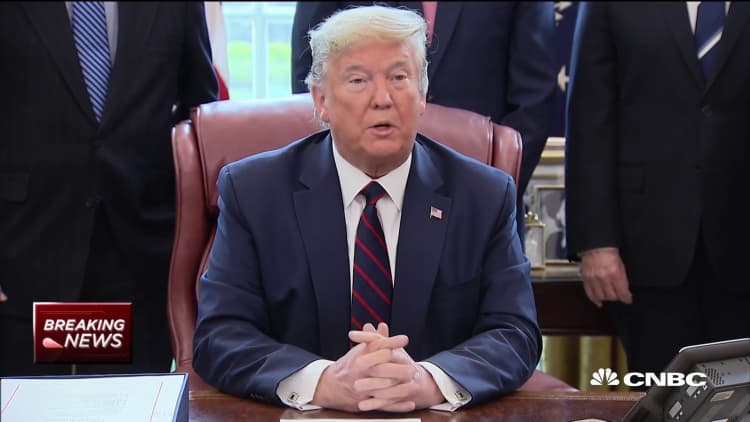The unprecedented 3.2 million jump in unemployment insurance claims is just one indication of the near total clampdown of the U.S. economy. Congress has responded by passing the largest stimulus package in U.S. history. The bill expands unemployment benefits to cover more workers, including self-employed and independent contractors, like gig workers, who do not usually qualify for unemployment.
Time will tell if this $2 trillion injection, known as the CARES Act, will deliver.
The U.S. is not alone. Around the world, governments are working overtime on major stimulus legislation to ward off economic disaster from Covid-19. We see many ways to structure a stimulus package and many potential beneficiaries. But what kind of stimulus will best help workers?
In the U.S. the challenges are unique: 57% of the workforce is either paid hourly or self-employed. Decades ago many hourly workers would have been in stable manufacturing jobs with decent benefits. However, over the last 30 years, jobs have declined in manufacturing as jobs increased in hospitality and services, where irregular and part-time hours with few benefits are common. People in these low-wage, unstable jobs seldom have paid sick leave. They're also the most likely to lose their jobs when no one is allowed to go out to restaurants, bars, hotels, cafes or concerts for an extended period of time.
In the U.S. the challenges are unique: 57% of the workforce is either paid hourly or self-employed.
That means a stimulus package aimed at workers needs to address sick leave, income support and supplemental benefits as well as the needs of the newly unemployed. The United States House of Representatives passed a bill to provide temporary paid sick and family leave, additional direct funding toward health, food security and unemployment programs and make coronavirus testing free. This bill was quickly passed by the Senate as well and signed into law.
No sooner had that $100 billion package passed the Senate than leaders from both sides immediately got to work on an expanded third package. The focus is on small businesses, individuals, hospitals and health-care centers. A key feature of the package is direct cash payments to eligible households, with half a trillion dollars allocated for that purpose.
As the package was debated, some senators were pushing their own proposals, hoping to advance a broader agenda. But the spirit of bipartisanship prevailed over point-scoring, as all knew time was of the essence.
Senate Majority Leader Mitch McConnell played a pivotal role in getting the latest deal right and over the line, while Nancy Pelosi warded off a last-minute block from a single representative to overwhelmingly pass the measure by voice vote in the House. Every member of Congress is keenly aware this money must get into the hands of individual Americans and businesses as soon as possible.
Across the globe, countries are injecting money into their economies to fight the effects of COVID-19. The U.K. Government has deployed the U.K. Coronavirus Job Retention Scheme, with grants of 80% of employees' wages.

Australia's stimulus package with tax cuts and investment incentives, plus relief for industries hardest hit by the fallout from the virus, is aimed more at business than workers. Apprentices are in a particularly vulnerable position in an economic downturn. As less experienced members of the workforce, they are sadly too often the first to be let go. Australia's stimulus package has provided for a 50% wage subsidy for apprentices, but only for select businesses.
And the New Zealand Government has a package to subsidize wages and support incomes.
Even in tiny Ireland, the government has pushed through a 3.1 billion stimulus to reform sick pay and illness benefits, making sure all workers – even the self-employed – have access to funds if they contract Covid-19.
As meaningful as these efforts are, there's no doubt there will be more to come. Governments can be expected to open their wallets and spend whatever it takes to remove systemic and social uncertainty and give people the confidence to think beyond the short term. I would expect multiple rounds of government stimulus worldwide, with many new and novel ideas tested.
The aim of stimulus packages is not intended to prevent a recession but to ensure the crisis is contained, workers suffer less, and the likely recession does not become a lost decade. Every tactic that was progressively deployed to mitigate the global financial crisis already has been redeployed in just two weeks.
We can expect this pandemic to reorder the priorities of society and shape the thinking of generations. It is an age defining event that will have myriad consequences, both predictable and unforeseeable.
— By Nicholas Wyman, a workforce development and skills expert and CEO of the Institute for Workplace Skills and Innovation
JOIN @Work: Join CEOs and experts including Arianna Huffington, Lazlo Bock and John Chambers for an interactive discussion on leadership and management amid this unprecedented crisis at the CNBC @Work Virtual Summit on April 2 at 12pm ET. For a full agenda and details, visit CNBCevents.com.





